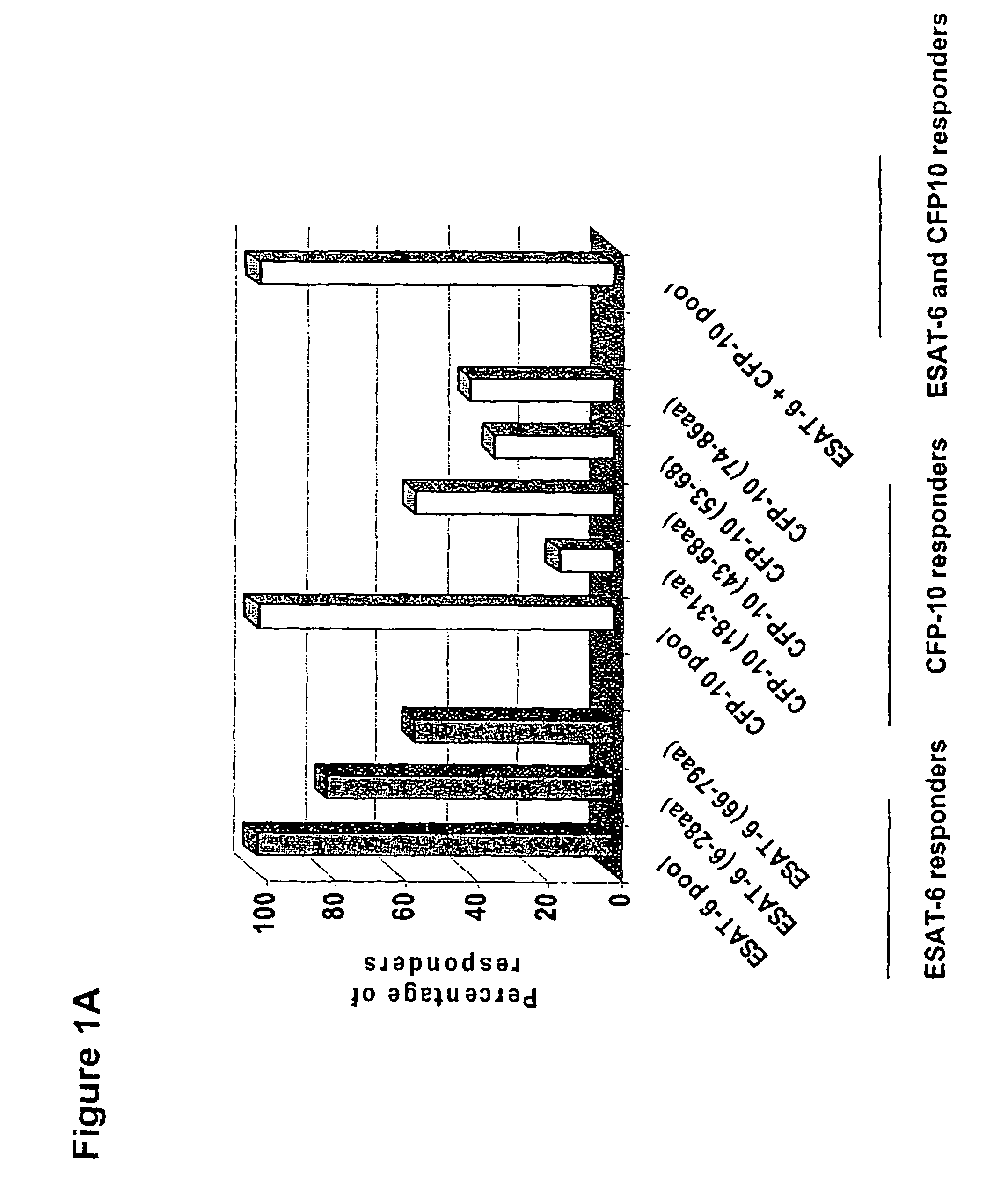Immune diagnostic assay to diagnose and monitor tuberculosis infection
a tuberculosis and immuno-diagnosis technology, applied in the field of immuno-diagnosis assay to diagnose and monitor tuberculosis infection, can solve the problems of significant limitations of test, and inability to culture virulent tuberculosis, so as to achieve the highest sensitivity of active tuberculosis and the effect of high assay sensitivity
- Summary
- Abstract
- Description
- Claims
- Application Information
AI Technical Summary
Benefits of technology
Problems solved by technology
Method used
Image
Examples
example 2
Procedure of the Immune Diagnostic Assay Performed on Whole Blood by ELISA See FIG. 3
[0164]The ELISA method on whole blood is performed by the use of the QuantiFERON-CMI (QF-CMI, manufactured by Cellestis Limited. South Melbourne, Australia), modified by us. In detail, we use 0.5 ml of blood instead of 1 ml, and therefore we use a 48-well plate instead of a 24-well. The whole procedure of the test requires the use of the following materials and reagents: IFN-gamma QuantiFERON-CMI kit; 48-well plate and 7 tubes, each containing the different stimuli at the desired concentration. The ELISA technique, performed on whole blood, is composed of the following steps:
1. Culture of Whole Blood
1. mix the tubes containing heparinised whole blood
2. distribute blood (500 μl / well) into sterile 48-well plates. For the children similar results can be obtained using 250 μ / well of blood. Consequently the volume of the Reagents 1-7 to be added will be 50% of the volume indicated.
3. add control mitogen ...
example 3
Procedure of the Immune Diagnostic Assay Performed by FACS
See FIG. 4
[0171]The whole procedure of the test requires the use of an IFN-gamma flow cytometer and the following materials and reagents: 24-well plate; mixture of antibodies (Becton-Dickinson, CA); brefeldin-A (Sigma, St. Louis, Mo.) and 7 tubes, each containing the different stimuli at the desired concentration.
[0172]In particular the FACS analysis method is composed of the following steps:
i. isolation of mononuclear cells (PBMC) from venous blood
ii. stimulation of Ag-Sp and incubation
iii. immunofluorescence staining
iv. acquisition and FACS analysis
v. diagnostic response.
[0173]In step (i), peripheral blood mononuclear cells (PBMC) are isolated from a small aliquot of venous blood (5 ml) by density gradient centrifugation (Ficoll-Hypaque, Pharmacia; Uppsala; Sweden) using a rapid test based on the use of special tubes equipped with a filter for the separation of leukocytes (LeucoSep™, ARNIKA, Milan. Italy). After 2 washed wi...
PUM
| Property | Measurement | Unit |
|---|---|---|
| concentration | aaaaa | aaaaa |
| concentrations | aaaaa | aaaaa |
| concentrations | aaaaa | aaaaa |
Abstract
Description
Claims
Application Information
 Login to View More
Login to View More - R&D
- Intellectual Property
- Life Sciences
- Materials
- Tech Scout
- Unparalleled Data Quality
- Higher Quality Content
- 60% Fewer Hallucinations
Browse by: Latest US Patents, China's latest patents, Technical Efficacy Thesaurus, Application Domain, Technology Topic, Popular Technical Reports.
© 2025 PatSnap. All rights reserved.Legal|Privacy policy|Modern Slavery Act Transparency Statement|Sitemap|About US| Contact US: help@patsnap.com



